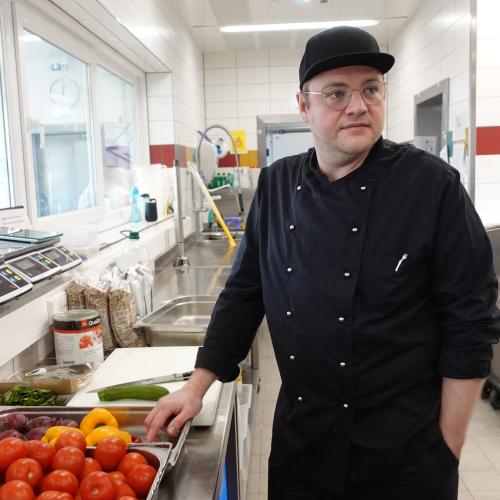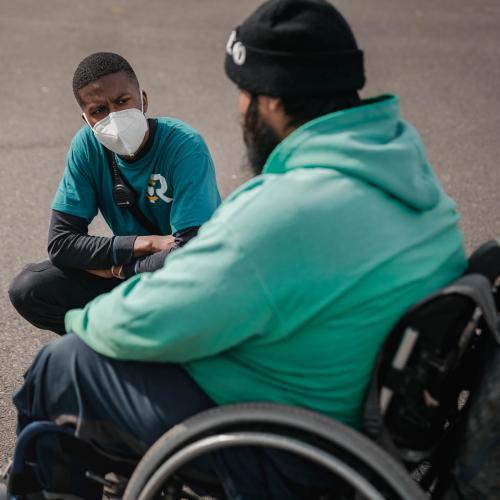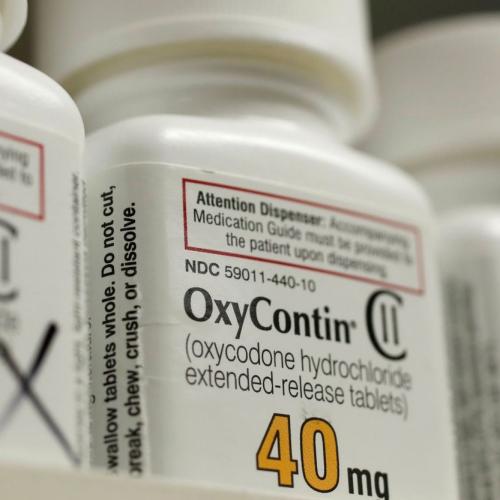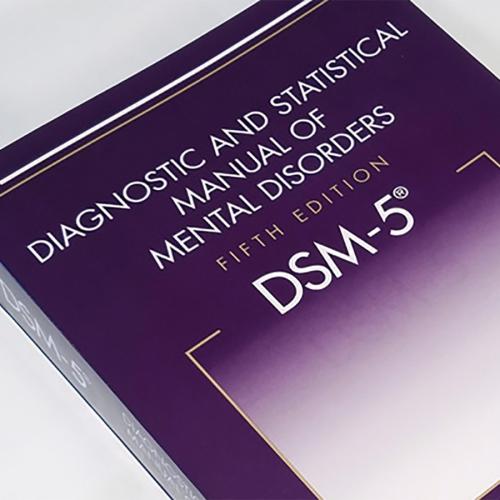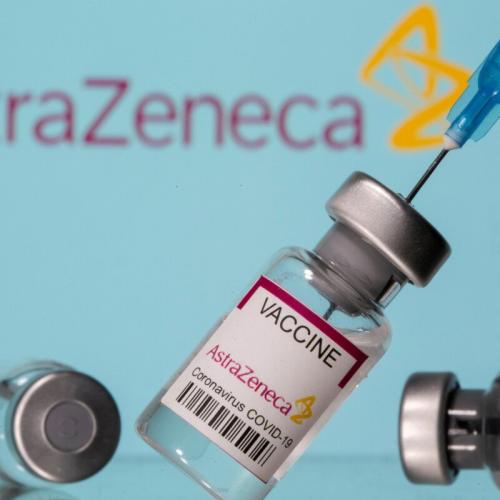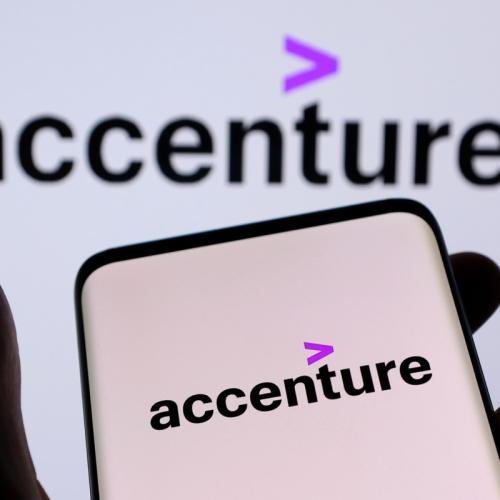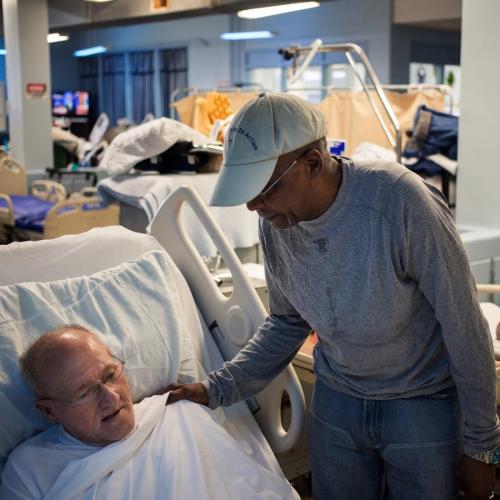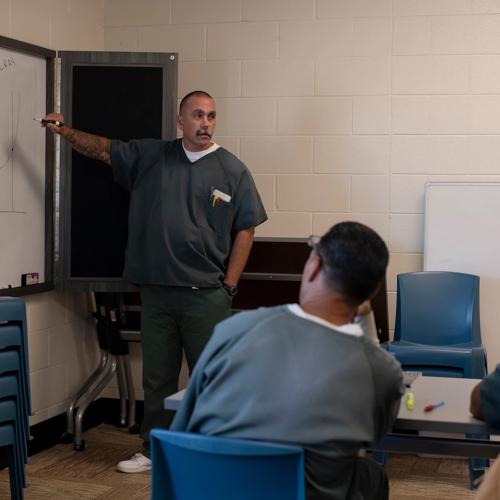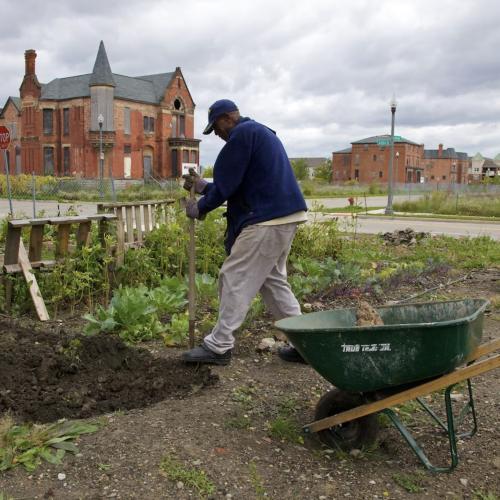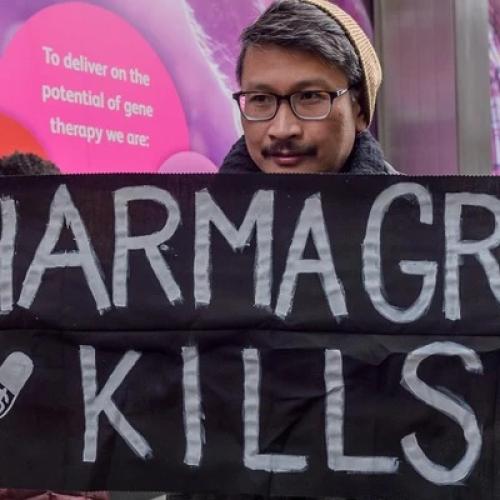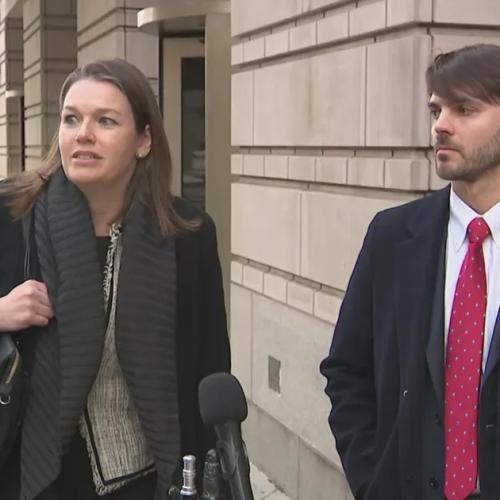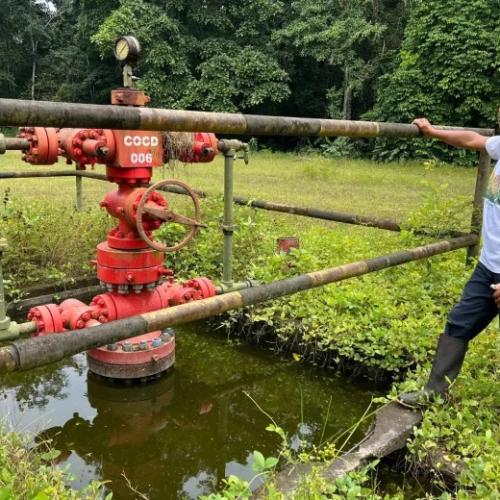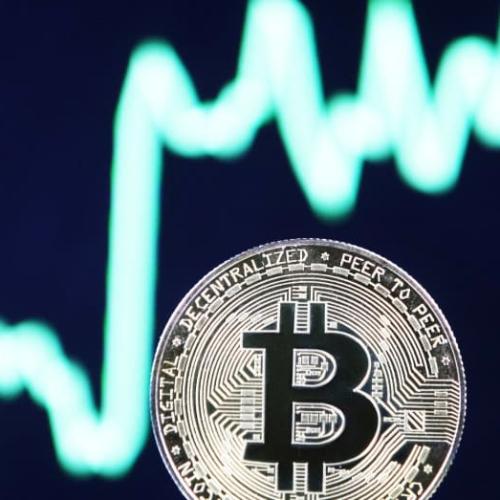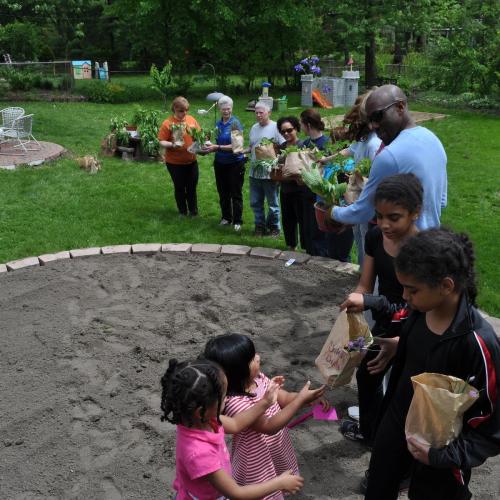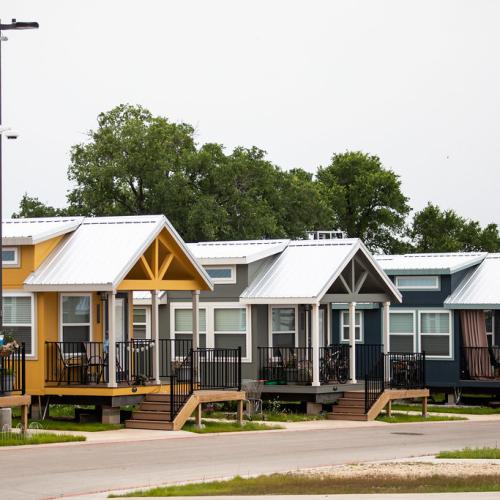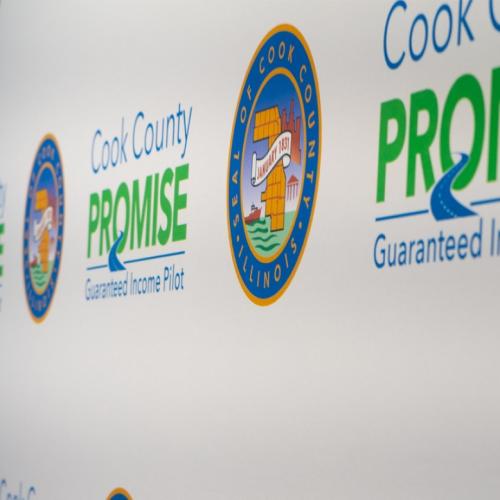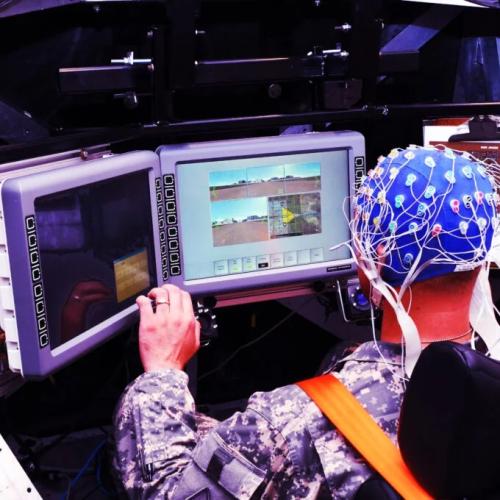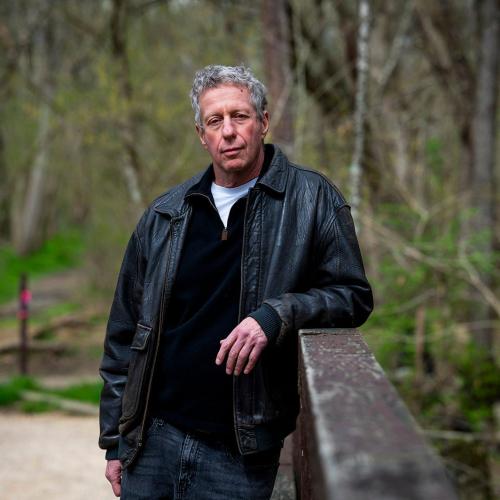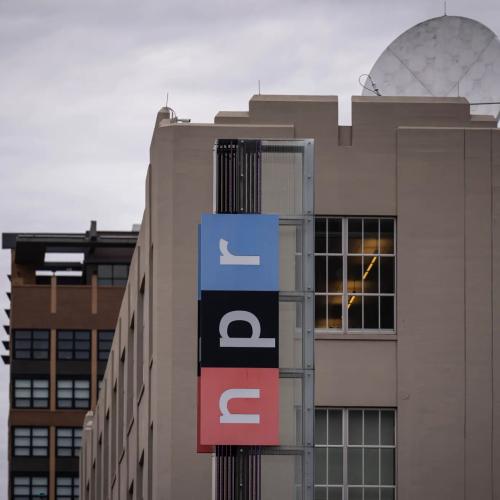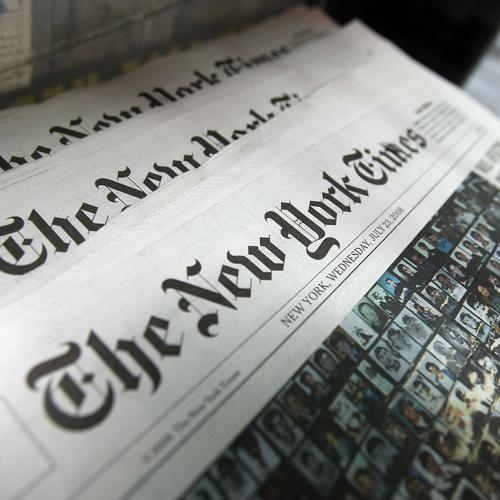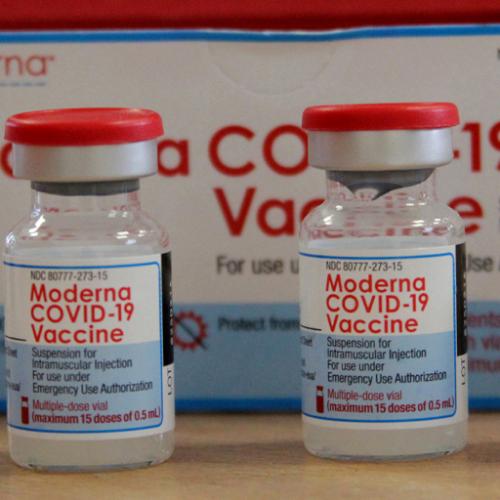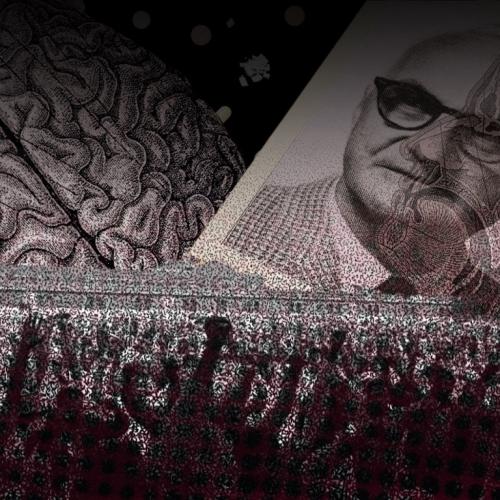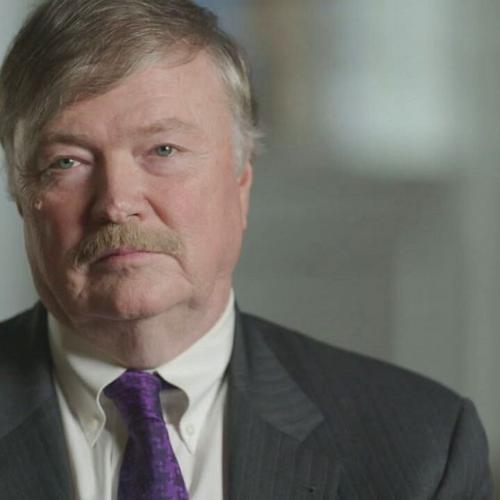Inspirational News Articles
Below are key excerpts of some of the most inspiring news articles from reliable news media sources. If any link fails to function, a paywall blocks full access, or the article is no longer available, try these digital tools.
For further exploration, delve into our Inspiration Center.
Scientists have developed new technology that can turn seawater into clean drinking water in less than 30 minutes. Researchers based in Australia used a metal-organic framework (MOF), a type of lattice-like crystal, to desalinate water. The hollow framework of pores separates the salty solute within the brackish water or even saltier seawater, in a process known as molecular sieving. Under dark conditions, the framework absorbs salts and other impurities in the water in 30 minutes. The MOF itself is then regenerated for reuse in just four minutes, using sunlight to remove the adsorbed salts. The light-responsive MOF was used to filter harmful particles from water and generate 139.5 litres of clean water per kilogram of MOF per day. Scientists say their technology is more energy-efficient than current desalination practices, including reverse osmosis, and could provide potable water for millions globally. Water scarcity is one of the largest global risks in the upcoming years, according to the World Economic Forum (WEF). Thermal desalination processes by evaporation using solar energy are widely used to produce fresh water, but can be highly energy intensive. 'Sunlight is the most abundant and renewable source of energy on Earth,' said Professor Huanting Wang ... at Monash University in Australia. 'Our development of a new adsorbent-based desalination process through the use of sunlight for regeneration provides an energy-efficient and environmentally-sustainable solution for desalination.'
Note: Explore a treasure trove of concise summaries of incredibly inspiring news articles which will inspire you to make a difference.
Research shows that acts of kindness make us feel better and healthier. Kindness is also key to how we evolved and survived as a species, scientists say. We are hard-wired to be kind. Psychology professor Sonja Lyubomirsky has put that concept to the test in numerous experiments over 20 years and repeatedly found that people feel better when they are kind to others, even more than when they are kind to themselves. Acts of kindness are very powerful, Lyubomirsky said. In one experiment, she asked subjects to do an extra three acts of kindness for other people a week and asked a different group to do three acts of self-kindness. The people who were kind to others became happier and felt more connected to the world. The same occurred with money, using it to help others versus helping yourself. Lyubomirsky said she thinks it is because people spend too much time thinking and worrying about themselves and when they think of others while doing acts of kindness, it redirects them away from their own problems. Oxfords [Oliver] Curry analyzed peer-reviewed research like Lyubomirskys and found at least 27 studies showing the same thing: Being kind makes people feel better emotionally. But its not just emotional. Its physical. Lyubomirsky said a study of people with multiple sclerosis ... found they felt better physically when helping others. She also found that in people doing more acts of kindness that the genes that trigger inflammation were turned down more than in people who dont.
Note: If the above link fails, this article is also available here. Explore a treasure trove of concise summaries of incredibly inspiring news articles which will inspire you to make a difference.
Dogs have such exquisitely sensitive noses that they can detect bombs, drugs, citrus and other contraband in luggage or pockets. Is it possible that they can sniff out even malaria? And when might that be useful? A small pilot study has shown that dogs can accurately identify socks worn overnight by children infected with malaria parasites even when the children had cases so mild that they were not feverish. In itself, such canine prowess is not surprising. Since 2004, dogs have shown that they can detect bladder cancer in urine samples, lung cancer in breath samples and ovarian cancer in blood samples. Trained dogs now warn owners with diabetes when their blood sugar has dropped dangerously low and owners with epilepsy when they are on the verge of a seizure. Other dogs are being taught to detect Parkinsons disease years before symptoms appear. The new study ... does not mean that dogs will replace laboratories. But for sorting through crowds, malaria-sniffing dogs could potentially be very useful. Some countries and regions that have eliminated the disease share heavily trafficked borders with others that have not. For example, South Africa, Sri Lanka and the island of Zanzibar have no cases but get streams of visitors from Mozambique, India and mainland Tanzania. And when a region is close to eliminating malaria, dogs could sweep through villages, nosing out silent carriers people who are not ill but have parasites in their blood that mosquitoes could pass on to others.
Note: Explore a treasure trove of concise summaries of incredibly inspiring news articles which will inspire you to make a difference.
People experiencing mental or behavioral health crises and addiction have often been subject to police use of force, arrest and incarceration. [There are] efforts around the country to change that. One of the most common new approaches ... are civilian co-responder programs, in which behavioral health specialists, often social workers, show up to certain emergency calls alongside police. These can include situations like suicide threats, drug overdoses, and psychiatric episodes. Typically, the officers on the team have special training in crisis intervention. Generally, these teams aim to de-escalate any crisis or conflict, avoiding arrest and solving the reason for the emergency call, especially if it’s a simple one. This week, the New Jersey Monitor reported that one call “for a welfare check on a woman with anxiety ended with the [state] trooper picking up her new cell phone from the post office and fixing a broken toilet” and the emergency call screener setting up her new phone. The Monitor also found that the program avoided arrests or police use of force in 95% of responses. The B-HEARD program in New York City, which is just three years old in a diverse city of 8.5 million, responded to roughly a quarter of mental health calls in precincts where it operated in the first half of 2023. Mental health calls make up 10% of all 911 calls in the city. In Denver, a study of the city’s STAR program found the alternative response model reduced low-level crime.
Note: Explore more positive stories about repairing the criminal justice system.
There was a lot that Army veteran Alex Dillman lost when he became a paraplegic after an IED blew up under his legs in Afghanistan, but now an unlikely activity has allowed him to take some of what he lost back. Hurtling through the air at 120 mph, Dillman doesn’t need his wheelchair to skydive; he doesn’t really need his legs either. In that unique state of concentration and freedom, he says he’s “expected to perform,” a do-or-die state of mind that he says he hasn’t felt since his old life on deployment. Dillman originally saw adventure therapy as a way to combat depression and PTSD he suffered from in the wake of his lost abilities, but he never imagined it would help him get some of those abilities back. Now he’s part of an adventure therapy non-profit called Skydive First Project, where he utilizes outdoor adventures to assist individuals suffering from PTSD and depression. Based in Tampa, activities encompass hiking, kayaking, rock climbing, horseback riding, scuba diving, and tandem skydiving. “[The] great thing about skydiving is that it gets me out of the chair,” said Dillman. “I don’t bring my chair with me, so I’m in a free state. I don’t need to be in the chair to perform the act of skydiving.” “I can feel my legs and my feet to a certain extent. I can get a better sense of my overall being, feel what my legs are doing, feel what my hips are doing. Having that feeling again ... even if it’s for 30 seconds or 60 seconds ... is enough for me!”
Note: Read more inspiring news articles on incredible people with disabilities.
Boogying the night away produces meaningful improvements in one's body mass and waist circumference in people who are overweight or obese, a new study found. Dancing was also seen to improve blood pressure, insulin sensitivity, physical fitness, cognitive disorders, hypertension, cardiovascular ailments, diabetes, and mental health—in other words, all the root causes of the non-communicable diseases that kill most people in the West. The researchers believed that dance would be a more ideal form of exercise because it is sustainable—it's a sociable, entertaining way of exercising that participants will enjoy, rather than a drudgery they have to push themselves through. “Dance is effective on fat loss in people overweight and obese and has a significant improvement on body composition and morphology,” said Zhang Yaya, a Ph.D. student at Hunan University, China. To get their results, published in the journal PLoS ONE, the team studied data from 646 participants who were overweight and obese across ten different studies. They found that dance is very effective for improving body composition and showed that more creative dance types had the most pronounced body composition improvement when compared with traditional dance. Improvements were also found in overweight children and patients with Parkinson’s disease.
Note: Explore more positive stories like this in our comprehensive inspiring news articles archive focused on solutions and bridging divides.
When the bell rings at Jerusalem's Hand in Hand school, you hear something that's not common in Israel: the sound of young people's voices rising together in laughter and conversation in both Hebrew and Arabic. Israeli society is largely segregated. The separation begins at kindergarten, when Jewish and Arab children are sent to different schools and experience completely separate education "tracks" or systems. "Arabs go to Arab schools in their neighborhoods and Jews go to Jewish schools in the areas where they live," says Nour Younis, events manager for Hand in Hand. Hand in Hand [was] founded in 1998 by a group of parents who wanted their children to grow up differently. What began as two kindergarten classes in Jerusalem and Galilee has now become six campuses nationwide, with some 2,000 students. The school's eventual goal is to create a fifth track of education within the Israeli school system. Today there are four options: Arab schools and three Jewish tracks — secular, religious and ultra-Orthodox. The students at Hand in Hand campuses are around 60% Arab and 40% Jewish. There is a waiting list of Arab children who would like to attend. Since Oct. 7 ... this school has become a rare oasis of freedom for Palestinians who say they can be harassed or worse for expressing their anguish over the war. "For our students, this is a safe place, a safe environment," says [school vice principal Engie] Wattad.
Note: Explore more positive stories like this in our comprehensive inspiring news articles archive focused on solutions and bridging divides.
Northwestern University's Prison Education Program welcomed its inaugural graduating class of incarcerated students on Wednesday, marking the first time a top-ranked U.S. university has awarded degrees to students in prison. Evanston, Illinois-based Northwestern ... runs the program in partnership with Oakton College and the Illinois Department of Corrections. It was a moving commencement ceremony for the 16 graduating men and their loved ones at the Stateville correctional facility in Crest Hill. "I have no words for this, (it's) otherworldly. Coming from where I came from, the things that I've been through and to be here is indescribable," said graduate Michael Broadway after the ceremony. Broadway attained his degree despite several setbacks, including battling stage 4 prostate cancer. "I'm just so proud of him," said his mother Elizabeth. "I really am. He looks so good in that gown." Due to ill health, she had not seen Broadway since ... 2005. Professor Jennifer Lackey is the program's founding director. "Twenty years ago, some of these guys were in rival gangs, and here they are swapping poetry with each other and giving critical engagements on sociology assignments," said Lackey. "The love and growth that we see in the community is really unlike anything I've experienced at the on-campus commencements." Around 100 students are enrolled in the Northwestern program across Stateville and the Logan Correctional Center, a women's prison.
Note: Explore more positive stories like this in our comprehensive inspiring news articles archive focused on solutions and bridging divides.
Over hundreds of thousands of years, women have developed more sensitive noses (particularly around ovulation and pregnancy), finer hearing at high frequencies, extended colour vision, and longer life expectancy than men by an impressive half decade. Forget plasma exchange and supplementation – entrepreneurs trying to extend human life should be studying women, who comprise around 80% of today’s centenarians. American academic and author Cat Bohannon asks how this came to be, tracing defining female features back to our “presumed true ancestors”, our Eves as she calls them. Bohannon calls on her astounding disciplinary range to tell this epic tale. Her writing ripples with references from literature, film studies, biochemistry, cognitive science and anthropology. Evolution, as Bohannon emphasises, doesn’t care about our contemporary preferences or sensitivities. This emboldens her to confront uncomfortable stereotypes, like whether women’s brains have evolved to be inferior to men’s (in fact, the sexes have strikingly similar cerebral equipment). The author’s parting plea is that we learn more about women and girls. In the UK, unlike the US, there is still no regulation that insists women are included in medical research. Not everyone agrees with the ethical good of extending participation. Might they acknowledge that being specific about people’s sex and gender leads to more rigorous and reproducible scientific results?
Note: Read more about author Cat Bohannon's fascinating take on a wide range of discoveries and differences between the male and female body.
At the highest point of Los Tres Miradores, a terrifyingly steep urban settlement with soaring views across Peru’s capital, Lima, there is a curious set of large structures that resemble a fleet of ships in the sky. They are so-called “fog catchers.” About 40 of these netted devices, made of high density Raschel polyethylene and spanning several meters wide, are lined up atop a misty mound and linked by a network of tubes that lead to storage containers. Home to a population of more than 10 million, Lima is one of the driest cities in the world. [The nonprofit] El Movimiento Peruanos sin Agua has helped install 600 fog catchers across Lima and a total of 2,000 across Peru, including in the regions of Arequipa, Iquitos and Cuzco. According to [founder Abel] Cruz, one man he supported is even able to raise 1,000 chickens thanks to fog catchers. In June, the project received a significant boost when it signed an agreement with the Mayor of Lima to install 10,000 more fog catchers in the hills surrounding the city in the next four years. The municipality ... said the project has the potential to “reforest, create ecological lungs, ecotourism and at the same time provide water for human consumption, for bio-orchards, botanical gardens, washing clothes, utensils and more.” In Los Tres Miradores, the 40 fog catchers — which were installed in 2021 — provide enough water for 180 families, whether to bathe, clean, drink (after being filtered at home) or to irrigate crops on small garden patches.
Note: Explore more positive stories like this in our comprehensive inspiring news articles archive focused on solutions and bridging divides.
The psychedelic drug MDMA, also known as ecstasy or molly, has passed another key hurdle on its way to regulatory approval as a treatment for mental illness. A second large clinical trial has found that the drug — in combination with psychotherapy — is effective at treating post-traumatic stress disorder (PTSD). In June, Australia became the first country to allow physicians to prescribe MDMA for treating psychiatric conditions. MDMA is illegal in the United States and other countries because of the potential for its misuse. But the Multidisciplinary Association for Psychedelic Studies (MAPS) ... has long been developing a proprietary protocol for using MDMA as a treatment for PTSD and other disorders. MAPS has been campaigning for its legalization. In 2021, researchers sponsored by MAPS reported the results of a study in which 90 people received a form of psychotherapy developed by the organization alongside either MDMA or a placebo. After three treatment sessions, 67% of those who received MDMA with therapy no longer qualified for a PTSD diagnosis, compared with 32% of those who received therapy and a placebo. The results of a second trial ... were similar: 71% of people who received MDMA alongside therapy lost their PTSD diagnosis. A MAPS spokesperson says that the organization plans to seek formal FDA approval before the end of this year, and that because the agency has already designated MDMA as a ‘breakthrough therapy’ ... it will be evaluated quickly.
Note: Read more about the healing potentials of mind-altering drugs. Explore more positive stories like this in our comprehensive inspiring news articles archive focused on solutions and bridging divides.
If you want a glimpse of the future, go to Japan. What lies ahead for many other countries, including the United States, is in rural areas and regional cities outside greater Tokyo: lots of people aging and dying, and relatively few giving birth and raising kids. In today’s Japan, the young and middle-aged are consumed by caring for the old, and small-town resources are overstretched. Japanese innovators are already demonstrating what’s possible — and, in many cases, not with high-tech fixes but by showcasing design thinking, dignity and respect. Instead, they would be invited to share their wisdom and skills to help them stay active, sharp and socially engaged. Old people at the center cook for one another and teach young people how to grow vegetables and make art. The city [of Toyama] repurposed old train and tram lines into a sleek light-rail system, with platforms placed at the level of the train cars so that people would not need to climb or descend stairs. Public transit ridership among people in their 60s and 70s has since more than tripled, and this has helped seniors maintain active and social lifestyles. Other social entrepreneurs in Japan have focused on food — for instance, bringing children and the elderly together in cafeterias that serve traditional dishes. One Tokyo pop-up eatery, dubbed the Restaurant of Mistaken Orders, has employed people with dementia as its waitstaff. [Japanese innovators have] yielded ideas that prioritize helping old people flourish, not just managing their illnesses, disabilities and deaths.
Note: Explore more positive stories like this in our comprehensive inspiring news articles archive focused on solutions and bridging divides.
Hollie Fallick looks over Brading on the Isle of Wight, at a patchwork of fields bordered by ancient oaks. She farms with her best friend, Francesca Cooper. The friends ... are part of a growing global movement practising regenerative agriculture – or regen ag for short. “Regenerative agriculture is nature-friendly farming,” says Fallick. “It’s thinking about the health of soil, animals, humans and how they all link together.” On Nunwell home farm, which sits alongside land the pair manage for the Wildlife Trust and produces meat and eggs for their direct-to-consumer business, chickens peck away alongside belted Galloway cows, nomadic pigs graze on grass as well as kale and bean “cover crops” sown to boost nutrients in the soil. The idea is that by following the basic principles of regen ag – not disturbing the soil, keeping it covered, maintaining living roots, growing a diverse range of crops and the use of grazing animals – they can regenerate tired and depleted soil and produce nutritious food. The work, they argue, is urgent. Up to 40% of the world's land is now degraded by industrial and harmful farming methods, according to the UN. Barnes Edwards, co-director of the Garlic Farm ... argues that regen ag farmers recognise the “hideously negative impact” of badly managed livestock farming. But they also argue “it’s the how, not the cow”, and say that cows pooing and trampling in diversely planted fields boosts soil health, micronutrients and attracts insects, birds and butterflies.
Note: Don't miss Kiss the Ground, a powerful documentary on the growing regenerative agriculture movement and its power to build global community, reverse the many environmental crises we face, and revive our connection to the natural world. Explore more positive stories like this in our comprehensive inspiring news articles archive focused on solutions and bridging divides.
It was once Latin America's largest landfill. Now, a decade after Rio de Janeiro shut it down and redoubled efforts to recover the surrounding expanse of highly polluted swamp, crabs, snails, fish and birds are once again populating the mangrove forest. "If we didn't say this used to be a landfill, people would think it's a farm. The only thing missing is cattle," jokes Elias Gouveia, an engineer with Comlurb, the city's garbage collection agency that is shepherding the plantation project. "This is an environmental lesson that we must learn from: nature is remarkable. If we don't pollute nature, it heals itself." The former landfill is located right by the 148 square miles (383 square kilometers) Guanabara Bay. Between the landfill's inauguration in 1968 and 1996, some 80 million tons of garbage were dumped in the area, polluting the bay and surrounding rivers with trash and runoff. In 1996, the city began implementing measures to limit the levels of pollution in the landfill, starting with treating some of the leachate, the toxic byproduct of mountains of rotting trash. But garbage continued to pile up until 2012, when the city finally shut it down. Mangroves are of particular interest for environmental restoration for their capacity to capture and store large amounts of planet-warming carbon dioxide, Gouveia explained. Experts say mangroves can bury even more carbon in the sediment than a tropical rainforest, making it a great tool to fight climate change. Comlurb and its private partner, Statled Brasil, have successfully recovered some 60 hectares.
Note: Explore more positive stories like this in our comprehensive inspiring news articles archive focused on solutions and bridging divides.
When Joan Carulla Figueres turned the roof terrace of his Barcelona apartment into a garden, it was out of nostalgia for his rural origins. Sixty-five years later, the ecological concepts he has long followed have become commonplace, and he is acclaimed as a pioneer of organic farming. Carulla, who celebrated his 100th birthday this year, is credited with creating the city's first roof garden. However, his "allotment in the sky" boasts far more than the usual tomato plants and pots of geraniums. It is home to more than 40 fruit trees, vines that produce 100kg (220lbs) of grapes a year, olives, peaches, figs, garlic, aubergines and even potatoes. He is passionate about potatoes. His approach to agriculture is what today we call organic, but Carulla insists he is not doing anything new and that poor farmers have always practised organic farming out of necessity. "My grandparents had little land and no money for fertiliser," he says. "They used animal and vegetable waste and straw. We lived a frugal life. We didn't go hungry, we just lived." Like his forebears, Carulla makes compost from everything, including old magazines and thin wooden fruit boxes. "There's almost nothing we don't use, everything decomposes eventually." If the war made him a vegetarian, it also made him a pacifist. He was 15 when Juneda was bombed and strafed by fascist warplanes. Carulla speaks with sorrow of the 117 people killed in the village and how the reprisals carried out by both sides at the end of the war broke his father’s spirit and drove his mother to an early grave. “She was one of the war’s silent victims,” he says. “I think she died from pain and suffering.” He also talks about how at the age of 10 he had an epiphany when he vowed to become un generador de amor (someone who generates love). "I don't know where this phrase came from, but I decided that what I had to do was to create love in everyone, universal love."
Note: Don't miss a great video on Figueres and his garden. Explore a treasure trove of concise summaries of incredibly inspiring news articles which will inspire you to make a difference.
In 2002, Chris Morgan lost his wife to cancer. A British army veteran who had put in 24 years of service as a gunner in the Royal Artillery, he was already struggling with PTSD when she passed away, and the grief from the loss triggered a breakdown. In despair, Morgan contemplated taking his own life. Instead, Morgan retreated to his shed. "It was my woodworking shed that was my safe place. And although I may not have done too much woodworking, it was just being in there that I knew helped," Morgan shared. "In fact, it saved my life." In 2008, he held an impromptu spoon carving class for a group of visiting wounded soldiers. The spontaneous seminar became a weekly workshop, and ultimately evolved into a dedicated permanent woodworking seminar that has been known as Veterans Woodcraft since 2016. Veterans Woodcraft is one of 3,000 so-called Men's Sheds scattered across the UK, Ireland, New Zealand, Canada, the US, Kenya and South Africa. The concept began in Australia in the 1990s to help tackle isolation and loneliness in predominantly older men. Men's Sheds UK chief officer Charlie Bethel ... says that of all the impacts he's seen from Men's Sheds in his five-year tenure, suicide prevention is the one that stands out the most. In a recent survey of 178 of the UK's 600 Men's Sheds, 25 percent of respondents said they had definitely saved a member's life, and 14 percent felt confident they had. Bethel hopes to set up a further 1,900 Men's Sheds across the UK over the next 10 years.
Note: Explore a treasure trove of concise summaries of incredibly inspiring news articles which will inspire you to make a difference.
A patient who was left almost completely paralyzed from a rare disease is now walking and talking again, after a music therapist prescribed mindful listening to his favorite song every night–in this case, a tune by The Carpenters. 71 year-old Ian Palmer was struck down with Guillain-Barr© syndrome last June, forcing him to spend seven months in a hospital where he was unable to walk or speak properly. The rare condition happens when a person's own immune system attacks their body's motor nerves, causing muscle weakness and sometimes paralysis. But when Ian was transferred to Sue Ryder Neurological Care Centre, a state-of-the-art care unit in Lancashire, England, clinicians used music therapy techniques to overcome 'near total paralysis of his body'. His specialist, Clare, taught him mindfulness techniques using his favorite records–and he began listening to The Carpenters each night. Ian was admittedly skeptical, but he can now walk 2 miles a day (3k) and have conversations with his family after the exercises "opened up" his brain. He's never been very musical, so when Sue Ryder first suggested music therapy he said, 'What good is that going to do?' "I'm a typical Northern man, and I thought, 'What's a girl with a guitar going to do for me–get me to the gym.'" "But it really worked. Clare sat me down and explained the process. I learned that music is very unlike other therapies, as it opens up all of the brain."
Note: Watch a profoundly touching documentary about a man who takes on the broken healthcare system to demonstrate music's ability to heal, combat memory loss, and awaken the soul and the deepest parts of humanity. Explore a treasure trove of concise summaries of incredibly inspiring news articles which will inspire you to make a difference.
Entrepreneurs in Jordan have created a sophisticated machine that pulls water from the desert air at a rate that could cure the country’s water woes. 1,000 units of their flagship device have already been pre-ordered by the Jordanian government, and the success of the invention has allowed the innovators to attract dozens of promising scientists who can hopefully expand on their success and bring water resources up to speed in the relatively-stable Near Eastern nation. Aquaporo [is] a relatively straightforward, air conditioning-sized machine that can harvest 35 liters of water every day in a desert climate of 20% humidity. Aquaporo CEO Kyle Cordova and engineering director Husam Almassad got their start at Jordan’s Royal Scientific Society. Their invention looked a bit like a chest freezer. Inside, rows of nanomaterials formed into tubes and other shapes act like a sieve that filters water out of the air. The physics behind it are much the same as those found in this Classical Indian architectural feature and takes advantage of air’s tendency to speed up as it moves through a narrow passageway; called the Venturi Effect. It leaves behind the heavier water vapor, which condenses, drops into a collection apparatus, and is fed then into a reservoir. Research on the efficacy of Aquaporo’s invention shows it can achieve levels of water purity greater than Nestle brand bottled water, and collects it from the air at double the rate of existing moisture capture technology.
Note: Explore more positive stories like this in our comprehensive inspiring news articles archive focused on solutions and bridging divides.
No one chooses medical debt. Many Americans who fall ill have no choice but to rack up debt in order to stay healthy or, in some cases, stay alive. For the underinsured and uninsured, incurring debt is inevitable. In a June 2022 survey, 40% percent of adults said they were burdened with medical debt. But progress on this issue is already underway. A recent report found that medical debt has fallen by almost 18% since 2020. This change is no coincidence, rather it points to the real impact that relief programs ... have had on everyday Americans. One such program comes out of my city of Toledo, Ohio. In November, Toledo City Council passed a community-scale medical debt relief initiative in partnership with Lucas County. We partnered with the national charity RIP Medical Debt and devoted $800,000 of Toledo’s ARPA funds (and $800,000 of the matched commitment from Lucas county) to medical debt relief. The way it works is simple: RIP Medical Debt purchases debt for pennies on the dollar and then relieves the debt. Our groundbreaking program will wipe out as much as $240 million in medical debt for as many as 41,000 people at a cost of only $1.6 million. There are no administrative hurdles for community members to overcome. Instead, relief recipients are simply sent a letter informing them their debt has been canceled. Two-thirds of Americans (67%) would support the Toledo model for medical debt relief being adopted in their community, including strong majorities of Democrats, Republicans, and Independents.
Note: Explore a treasure trove of concise summaries of incredibly inspiring news articles which will inspire you to make a difference.
“Nelson Mandela – I’d never heard the name before in my life,” a former prison guard to the South African icon recalls. Christo Brand casts his mind back to 1978, and his first night guarding one of the most influential people of the past century. He was just 19 years old. A sergeant informed him the ageing man sleeping uncomfortably on the floor of the Robben Island jail cell was “a terrorist trying to overthrow your country”. Mr Brand ... soon became close with Mandela. He began to spend days and nights with Mandela, who he says remained charming even after some 16 years as prisoner 466/64. In time he saw virtue in the older man’s crimes. Reflecting after years at Mandela’s side, years in which he saw his friend slowly but surely topple the old order, Mr Brand says: “Mandela was fighting for the freedom of the country, he was prepared to go to the gallows for freedom for his people”. “When Mandela was in prison,” Mr Brand says, “he studied Martin Luther King and Gandhi, he tried to follow their footsteps and try to bring a change.” In his memoir Long Walk to Freedom, Mandela hints at why he kept his prison officer at his side even after being freed. Mr Brand, he writes, “reinforced my belief in the essential humanity even of those who had kept me behind bars”. Mandela emerged from prison in 1990 already negotiating with South Africa’s leadership for the changes that would see the country’s first democratic election a few years later.
Note: Read more on Nelson Mandela's powerful capacity for empathy, and how he served as a striking role model for addressing the hearts, not minds, of people we deem as opponents or oppressors.
Important Note: Explore our full index to revealing excerpts of key major media news articles on several dozen engaging topics. And don't miss amazing excerpts from 20 of the most revealing news articles ever published.







